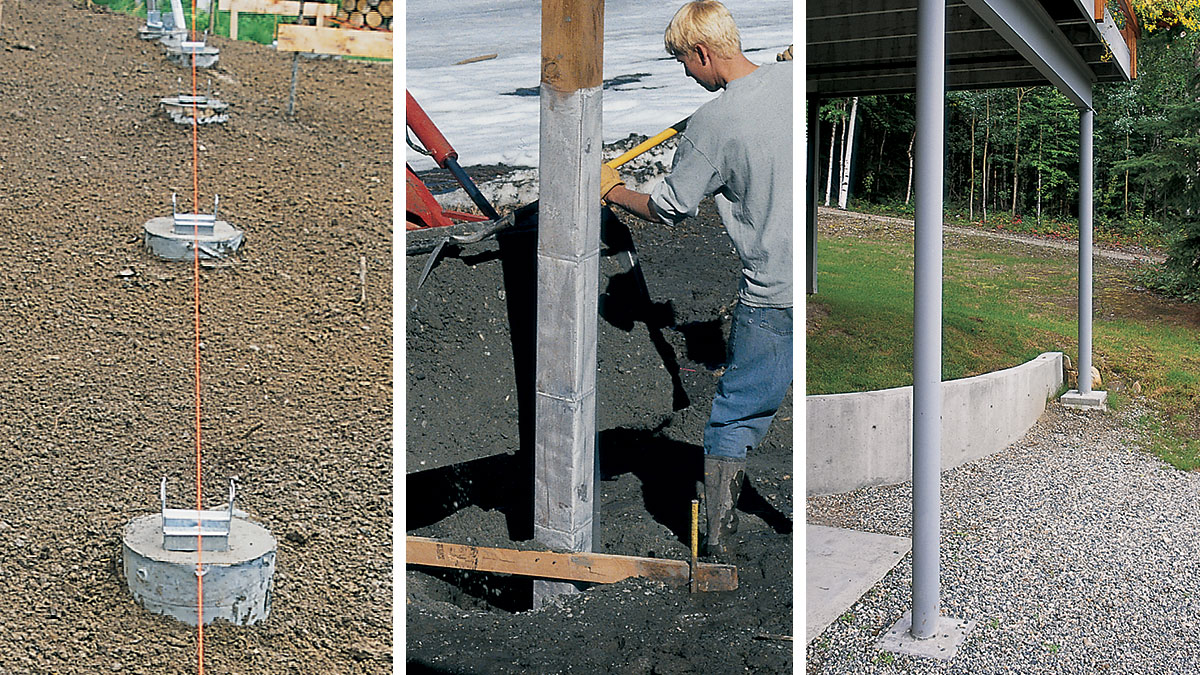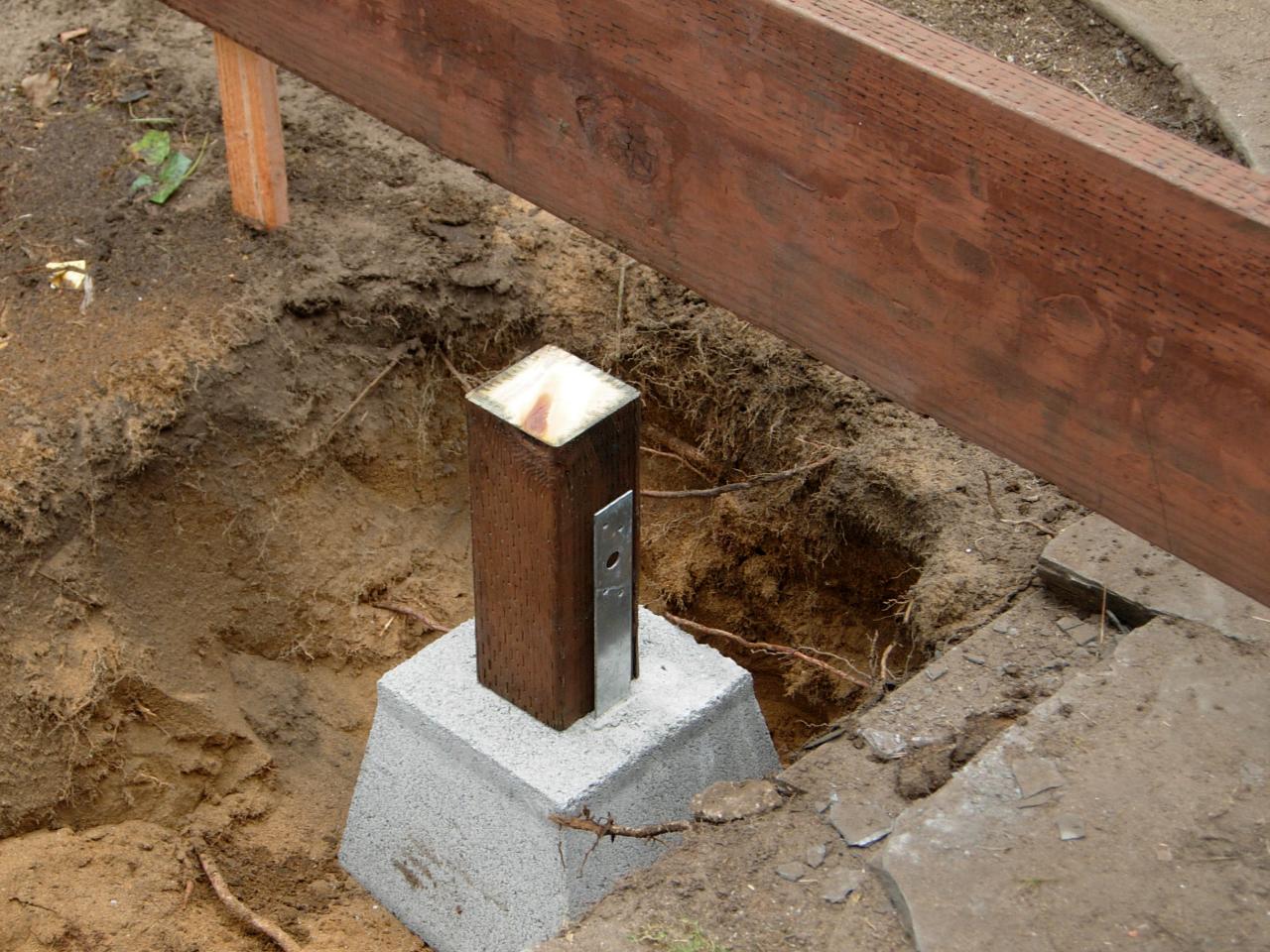Picking the Right Deck Footings for Stability and Resilience
When it involves constructing a deck, one of one of the most important decisions you will make is picking the best footings for stability and longevity. The long life and safety of your deck depend greatly on the sort of grounds you pick, as they give the important support and stability to endure the examination of time. With a myriad of alternatives available, it can be frustrating to establish which footings are best fit for your certain requirements. In this conversation, we will discover the numerous sorts of deck footings, take into consideration the crucial factors to weigh when deciding, and explore the pros and disadvantages of different choices. By the end, you will certainly have a more clear understanding of the selections handy and be better furnished to make a notified decision for your deck task.
Sorts Of Deck Grounds
There are a number of sorts of deck grounds that can be made use of, each offering distinct benefits and factors to consider. One usual kind of footing is the concrete pier footing. These grounds are composed of a cylindrical opening loaded with concrete, which supplies a solid structure for the deck messages. Concrete pier grounds are reasonably simple to set up and provide exceptional security, making them a popular choice for several deck jobs.
These grounds are mounted by screwing them into the ground, which produces a safe foundation for the deck. They likewise allow for easy adjustment and leveling of the deck if needed.
Additionally, some builders choose precast concrete footings. These grounds are made from sturdy concrete and come in various sizes and shapes to fit different deck designs. Precast concrete footings are hassle-free to mount and provide a steady base for the deck structure.
Finally, an additional choice is the post-in-anchor ground system. This kind of footing entails driving a metal support into the ground and attaching it to the deck blog post. It uses flexibility in regards to positioning the deck articles and appropriates for decks with lightweight frameworks.
When selecting the appropriate type of deck ground, it is important to take into consideration variables such as dirt conditions, deck load, and neighborhood building codes (Deck Footings). Consulting with a specialist specialist or structural designer can assist make certain the suitable ground is chosen for a stable and secure deck
Aspects to Take Into Consideration When Selecting Grounds
When choosing the suitable footings for a deck, it is crucial to thoroughly take into consideration numerous aspects such as dirt conditions, deck tons, and adherence to regional structure codes. These elements play a significant role in guaranteeing the security and resilience of the deck framework.
The type of dirt on which the deck will be built figures out the kind of grounds called for. On the other hand, decks developed on clay or extensive dirts might require footings that can accommodate the soil's propensity to increase and agreement.
An additional vital variable is the deck tons. The weight of the deck, consisting of the materials utilized and any potential live tons such as furniture or celebrations, must be considered when selecting grounds. The grounds have to be designed to birth the weight of the deck and distribute it uniformly to stop any structural issues or failures.
Last but not least, adherence to regional building ordinance is extremely important. Structure codes vary from area to region, and it is important to conform with the particular requirements established by the local authorities. Deck Footings. These codes guarantee that the deck is built safely and fulfills the essential criteria for architectural integrity and load-bearing ability
Concrete Footings: Cons and pros

When utilized as the structure for a deck,Concrete grounds check this site out offer a number of benefits and disadvantages. On the silver lining, concrete grounds provide exceptional security and longevity. Concrete is a solid and inflexible material that can support heavy tons and hold up against various weather conditions. It likewise has a long life expectancy, making it a reliable choice for long-lasting usage.
Another advantage of concrete footings is their convenience. They can be poured right into various shapes and sizes to suit various deck layouts and configurations. Concrete footings can be tailored to fit the particular demands and requirements of the deck structure.
Nonetheless, there are also some disadvantages to using concrete footings. One major disadvantage is the price and labor involved in their installment. Concrete grounds call for excavation and usually require the help of heavy machinery. This can raise the total expense of the deck job and may require professional aid.

Helical Piers Vs. Sonotubes: Which Is Much better?
In thinking about the structure choices for a deck, the contrast between helical piers and sonotubes is essential in determining the premium selection. Helical piers, likewise referred to as screw stacks, are steel shafts with helical plates affixed to them. They are turned into the ground utilizing hydraulic machinery, providing a resilient and stable structure for the deck. On the other hand, sonotubes are cylindrical types constructed from cardboard or fiber product that are full of concrete. They are positioned in an opening explored the ground and offer support for the deck.
When it concerns stability and toughness, helical piers have the top hand. The helical plates on the piers create a strong grasp with the dirt, stopping any type of movement or changing of the deck. This is particularly advantageous in areas with unstable or changing soil problems. Sonotubes, on the other hand, rely solely on the concrete filling for stability, which might not use the exact same level of strength and resistance.
In terms of installation, helical piers are reasonably simpler and faster to set up contrasted to sonotubes. The hydraulic equipment made use of to twist the piers into the ground ensures a reliable and quick procedure. Sonotubes, on the various other hand, need excavating holes and putting concrete, which can be lengthy and labor-intensive.
In addition, helical piers are a more functional choice. They can be used in numerous soil problems and can be adjusted or enhanced if needed. Sonotubes, on the various other hand, may need additional assistance, such as rebar, in certain soil conditions or areas with high tons needs.
Picking the Right Footings for Your Deck's Dimensions
For optimal structural stability, it is necessary to very carefully pick the ideal footings that align with the dimensions of your deck. The dimensions our website of your deck, including its width, length, and height, play a significant role in figuring out the type and size of grounds called websites for.
When choosing footings for your deck, it is necessary to take into consideration the load-bearing ability of the soil. The weight of the deck, combined with the weight of any type of furnishings or people on it, applies a significant pressure on the footings (Deck Footings). It is important to choose footings that can adequately sustain this weight without sinking or shifting over time.
The size and shape of the footings ought to also be considered. Bigger decks with better measurements call for bigger grounds to supply adequate stability and assistance. The form of the footings, whether they are square or rounded, relies on the layout and design of the deck. Furthermore, the deepness at which the grounds are set up must be figured out based upon the frost line in your region to protect against any type of heaving or shifting as a result of freezing temperature levels.
Final Thought
In final thought, selecting the appropriate deck grounds is critical for making sure security and longevity. Variables such as the sort of grounds, the deck's dimensions, and the advantages and disadvantages of various options ought to be considered. Concrete footings use toughness and durability, yet may be a lot more expensive and lengthy to install. Helical piers and sonotubes have their very own benefits and drawbacks. Inevitably, selecting the suitable grounds for your deck's specific requirements is crucial for a successful and durable framework.
These grounds are composed of a round hole filled with concrete, which offers a solid foundation for the deck messages. Concrete pier footings are fairly simple to mount and supply excellent stability, making them a popular choice for numerous deck jobs.
Precast concrete grounds are practical to mount and provide a stable base for the deck structure.
It provides versatility in terms of positioning the deck articles and is ideal for decks with light-weight frameworks.
Concrete grounds offer a number of benefits and disadvantages when made use of as the structure for a deck.